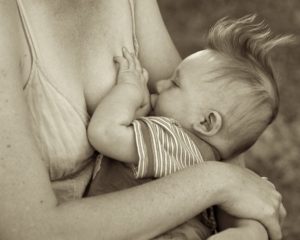Breastfeeding1 can be a subject that raises many questions, especially for first-time mothers. However, when we talk about certain diseases that appear with breastfeeding, the subject can become even more confusing. One of the clearest examples of this is when we talk about mammary candidiasis, a type of disease that can manifest in various ways in a woman, including due to breastfeeding, but that does not depend on factors such as latch or the baby’s health, for example. And because it’s such a delicate topic and not widely discussed, it’s necessary for us to better understand what this disease is, why it occurs, and what it has to do with breastfeeding.
What Is Mammary Candidiasis?
Mammary candidiasis is characterized by an infection of the breasts that may affect only the nipple, the nipple and the areola, or even the milk ducts2. The infection is usually caused by fungi and can lead to wounds that are slow to heal. The fungus responsible for this disease is called Candida albicans. The disease generally occurs when a woman’s immune system is very low, in other words, it can be an autoimmune disease, but it can also be passed from the baby to the mother during breastfeeding, which is quite common. In this case, the baby may have what is called oral candidiasis, also known as thrush, which causes white patches around and inside the mouth, but the baby can still transmit the disease to the mother even if they don’t have any visible infection.
Main Symptoms of Mammary Candidiasis
The main symptoms of mammary candidiasis include:
- Severe nipple pain;
- Sensation of burning inside the breasts;
- Itching;
- Redness;
- Wounds on the breasts that are slow to heal;
- Cracks at the junction of the nipple and the areola;
- Reddened skin around the breast area
These symptoms may appear together or separately and not all of them necessarily occur in every woman who has the disease; it all depends on the woman’s immune system, the severity of the disease, and even the manner in which it is or isn’t being treated. These factors also play a role in how quickly or slowly healing takes place, as well as what the ideal treatment should be. 
Treatment of Mammary Candidiasis
The disease is usually treated with antifungals, which are taken for about 3 weeks until the symptoms disappear completely. In addition, both antifungal creams and creams to help with wound healing are also used to treat the disease3. Some measures must be adopted during treatment, with the most important being keeping the breast area dry between nursing sessions. This is because Candida albicans thrives in moist environments, which can make the treatment of mammary candidiasis more difficult. If the baby shows symptoms of oral thrush, both mother and baby need to be treated at the same time to prevent reinfection and recurrence of the disease.
How to Prevent Mammary Candidiasis?
Although it’s an undesirable disease that can develop relatively easily depending on the circumstances, there are some steps that can help prevent mammary candidiasis from appearing. These are:
- Do not use artificial nipples for breastfeeding, as they facilitate fungal growth.
- Keep the breasts always dry
- Always wash your hands
- Keep your breasts well ventilated
- Do not use products that make the breasts sweaty or damp
These small steps help prevent mammary candidiasis and also oral thrush in the baby, since when you have less contact with fungi, the baby will as well. Bear in mind that these measures do not completely eliminate the risk of developing mammary candidiasis, since it can also be an autoimmune disease.
Can the Baby Be Affected?
You may have noticed that the disease can be transmitted from the baby to the mother. But can the baby be affected in another way? The answer is yes. Not as a disease, but unfortunately breastfeeding won’t be as pleasant while the mother has mammary candidiasis. Breast pain—common symptom of the disease—tends to worsen during breastfeeding, which ends up making things more difficult and, indirectly, may affect the baby in some way. Even so, this does not harm the baby’s feeding or nutrition, but remember to follow treatment rigorously so that healing happens more quickly. Diseases like mammary candidiasis are more common than we think, but they’re also treatable and do not pose a major health risk. Despite this, a disease like this certainly causes discomfort, and is yet another concern on top of the many you already have with your baby. That’s why it’s so important to have support during these times and be able to count on people who can help you. Very soon, you’ll be well again and able to resume your usual routine as a mother and all the concerns that come with it. See also: Cracked Nipple – What to Do? Photo: Nikon D90











